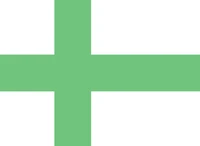| Vinlandic | |
|---|---|
| vinlenska | |
 | |
| Pronunciation | [ˈvinlɛnska] |
| Region | North America |
| Ethnicity | Vinlanders |
Native speakers |
c. 500,000 (2020) |
Indo-European
| |
Early forms |
Old Norse
|
| Latin, formerly runes | |
| Language codes | |
| ISO 639-1 | vn |
| ISO 639-2 | vin |
| ISO 639-3 | vin |
Vinlandic (/vinˈlændɪk/; Vinlandic: vinlenska) is a North Germanic language spoken by about 5,000 people in North America. It is the indigenous language of the Vinlanders, an ethnicity of Nordic origin with strong Native American influence, mainly from Algic and Iroquois peoples. Vinlandic descends directly from the Western dialect of Old Norse, which arrived North America around 1000 AD. Unlike its modern counterparts in Scandinavia, Vinlandic maintains a complex grammar similar to that of Icelandic. It has also incorporated vocabulary and grammar from Native American languages, particularly Cherokee, which belongs to the Iroquois family.
Early forms[]
After decades of isolation in North America, the Old West Norse dialect spoken by the first settlers of Vinland became significantly different of those spoken elsewhere, but not to the point of being considered a distinct language. This stage is called Old Vinlandic. Despite a few idiosyncrasies in intonation and vocabulary, it remained highly mutually understandable with other Old Norse varieties, particularly Old Icelandic.
By around 1135, Vinlandic was already very different from Old Norse and only half recognizable by Scandinavians. Words with Native American etymologies started to be used for alien concepts to which the Vinlanders were unfamiliar. Those even replaced some already existing terms of Germanic origin over time, similar to how terms of French (Latin) origin replaced those of Anglo-Saxon (Germanic) roots in English. This period is known as Middle Vinlandic and lasted until contact with post-Columbian Europeans began.
Grammar[]
Unlike Danish, Norwegian and Swedish but like Icelandic and Faroese, the Vinlandic language preserves the complex grammar of Old Norse, with three genders (masculine, feminine and neuter) and four cases (nominative, accusative, genitive and dative). Due to Algonquian and Iroquois (Cherokee) influence, some phrases and sentences in Vinlandic can be synthesized in a single, long word. For these reasons, Vinlandic is a highly polysynthetic language.
Lexicon[]
Most basic vocabulary of Vinlandic comes from Old Norse, which includes terms for concepts the Vikings were already familiar before contacting the Native Americans. Terms for new concepts, not only cultural elements of the Natives but also plants, animals and food that did not exist in Europe, are of Algic or Iroquois origin. However, there are some exceptions in which Native American terms have replaced some already existing Germanic terms over time, or Old Norse terms were used to describe new concepts.
Wordlist[]
frá = from
tók = take
avohál = eagle (cherokee: awohali)
hvär = who
þó = you
állór = all
gryn = green
ganúl = grass (cherokee: ganulv)
raðór = red
asin = backwards (cherokee: asini)
göðór = good
don = why (cherokee: doni)
yys = ice
See also[]
| ||||||||||||||||||


